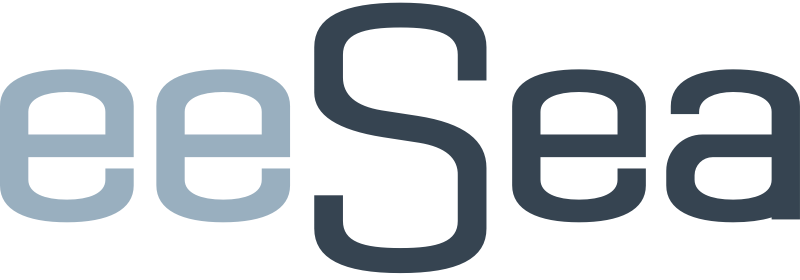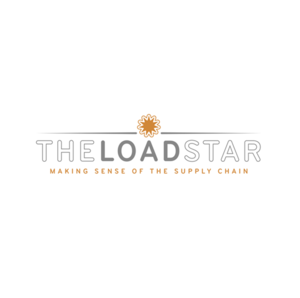
eeSea in the Press
“It was just over a month ago that forwarders began to realise significant disruption was on the way for the Asia-North Europe trade – a sudden surge in demand led to tight space, combined with the beginning of spot rates’ rapid rise.
However, it also appears to have caught carriers off guard as well, as data obtained from the eeSea liner database shows that capacity reductions on the trade in April amounted to almost 25% of previously advertised capacity.”
“According to new data from liner database eeSea, which today published its first-quarter Schedule Reliability Scorecard, after seeing a widespread improvement during most of last year, industry-wide on-time performance of vessels went into reverse in November.”
“Notwithstanding the ramifications of the new tariffs in the US this week, container carriers have long been preparing for a slowdown on the key transpacific trade during February.
According to new analysis from the eeSea liner database, the liner industry offered a combined capacity of 1,328,000 teu on the Asia-North America west coast trade in January, compared with a proforma 1,463,000 teu of scheduled capacity.”
“Maersk is confident that its key South-east Asia hub of Tanjung Pelepas (PTP) will handle the pressure of being the most important global hub in the upcoming Gemini Cooperation network.(…)
However, according to the eeSea liner database, last year PTP operated at close to 100% utilisation – it has a stated annual capacity of 12.5m teu and saw throughput of 12.12m during 2024.”
“Today, Gdansk is host to some 15 liner services, according to the eeSea liner database, including five Asia-Europe services, and this is unlikely to change with the alliance reshuffle taking place in a few days’ time – while the end of the 2M will see Maersk’s calls at the port served through a shuttle string from Bremerhaven, under its new Gemini arrangement.”
“The pervasive headwinds of Q4 24 translated into yet another decline in ocean shipping schedule reliability – but there are signs of a welcome respite for shippers on the horizon.
Liner database eeSea today published its Schedule Reliability Scorecard, which reveals average delays reached 4.8 days globally in Q4, up on Q3’s average of 4.5 days.”
“In an analysis last week, eeSea head of operations and forecasting Destine Ozuygur tipped the French carrier and its Chinese partners to be the first to return to the canal, given “the relatively generous timing for Ocean Alliance’s new Day 9 network roll-out in April, and previous tests from CMA CGM, OOCL, and Cosco on their partnered non-alliance services suggest we could see an early appearance on these schedules first.”
“According to the eeSea liner database, the current CES service has seven ships deployed with an average capacity of 2,500 teu, and the redesigned port rotation means a call at Kingston has also been dropped.
Hapag-Lloyd said customers needing to ship to the Jamaican hub would need to tranship at Colombia’s port of Cartagena, which is served on the German carrier’s Europe-South America west coast SWX service, which it operates in cooperation with CMA CGM and Cosco, and on which Maersk and OOCL charter slots, according to eeSea.”
“With the whole world talking about the Israel-Palestine ceasefire announcement, it’s expected that supply chain stakeholders will be eyeing any immediate impacts to now well-established routing past the Cape of Good Hope. "After all, expectations for Europe - Middle East, Transatlantic and Asia - Europe trades have long since shifted," says the latest update from eeSea.”
“Following yesterday’s announcement from Japanese container line ONE that it is to participate in three transatlantic services with Ocean Alliance carriers, there was further confirmation today that next year will see the Ocean and Premier alliances jointly operating transatlantic networks.
According to analysts at liner database eeSea, the network rejigs represent a reform of the current transatlantic services operated as THE Alliance, which is set to be replaced by the Premier Alliance at the beginning of February.”
“According to the eeSea liner database, the CGX service deploys 12 vessels, with an average 4,200 teu capacity, while Hapag-Lloyd said the new rotation would kick off with the departure of the 6,500 teu Copiapo from Shanghai on 3 January.”
"Shipping intelligence platforms Xeneta and eeSea have announced a partnership to offer insight into pro-forma transit times.
The collaboration will post scheduling intel gained by eeSea on Xeneta’s platform."
""Our customers need to connect ocean transit times with the pricing they receive from suppliers," says Thorsten Diephaus, Vice President, Strategic Alliances, Xeneta. "Adding eeSea’s pro-forma transit time data as well as real-time transit time data to Xeneta will empower our customers to make better decisions, and ultimately move us towards a more efficient and transparent global shipping ecosystem."
Simon Sundboell, Founder & CEO of eeSea adds: “We are excited to partner with Xeneta to bring a new level of insight and transparency to the industry. Port-to-port transit times and schedule reliability at load and discharge are increasingly seen as decisive parameters when selecting carrier partners. As such, this partnership will help cargo owners and logistics providers make more informed decisions during tender season and throughout the year."
"As the ILA strike at US east and Gulf coast ports enters its second day, with container terminals across the seaboards now closed, anchorages outside ports have begun to fill up.
However, initial signs indicate that carriers might opt for different strategies for vessels that are unable to dock at ports in the region.
According to the eeSea liner database, the east coast port of Savannah has the biggest queue, with some 10 ships at anchor and another seven en route."
"ILA president Harold Daggett (pictured) commented via a post on Facebook yesterday: “Yes, I am fighting for us every fucking day, these greedy bastard corporations overseas all they want is money, money, money, and they don’t give a shit about us.”
Danish liner consultancy eeSea currently counts 260 boxships with a forecasted arrival into strike affected ports in the next seven days. Tails on the inset map above represent the last 24 hours movement while a dot represents a vessel not moving."
"A Loadstar analysis of the eeSea liner database’s forthcoming US east and Gulf coast vessel calls shows a number of call omissions, with vessels either slow-steaming to the closed ports, at anchor, or returning to non-US ports.
For example, the 11,850 teu Ever Feat, deployed on the Ocean Alliance’s AWE5 Asia-USEC service, omitted its call at Baltimore today and is heading straight back to the Vietnamese port of Cai Mep."
"As the clock ticks down to the midnight expiration of the current ILA-USMX master contract, The Loadstar has received the first confirmation of a container vessel skipping its scheduled US east coast calls.
Destine Ozuygur, head of operations and forecasting at liner database eeSea told The Loadstar that the 3,400 teu MSC Sagitta, deployed on MSC’s intra-Americas Canada Gulf Service was the first confirmed ship to make “a ‘true’ inducement call to Halifax and omitting her two US east coast ports along the way, although she was still slated to visit three Canadian ports by proforma,” she said."
“PIL had the most reliable schedule among the top 12 container lines in Q2 2024 when arranged by average delay time, breaking Maersk’s streak at the top since Q3 2021, according to eeSea’s latest container reliability scorecard.”
“As uncertainty hangs over Canada’s rail system being shut down by a strike, shipping lines on the transpacific trade have begun to cancel calls to the country’s main pacific gateways, Vancouver and Prince Rupert.
“Anticipation of a strike keeps carriers on their toes, with some already taking significant action to omit, blank, or swap calls into Vancouver in June and beyond,” an eeSea trade update said.”
“The Q1 Schedule Reliability Scorecard, published by liner database eeSea this week, included an insight into how bunching and delays ripple across a service.
Breaking down the vessel arrivals on THE Alliance’s transpacific TP4 service, it is effectively a postmortem of schedule disruption, demonstrating how delays increase in magnitude over the course of several rotations.”
“It was just over a month ago that forwarders began to realise significant disruption was on the way for the Asia-North Europe trade – a sudden surge in demand led to tight space, combined with the beginning of spot rates’ rapid rise.
However, it also appears to have caught carriers off guard as well, as data obtained from the eeSea liner database shows that capacity reductions on the trade in April amounted to almost 25% of previously advertised capacity.”





















“Today, Maersk warned customers that it had noted congestion at the Kenyan gateway of Mombasa, due to “higher-than-expected yard density” and “equipment challenges”.
These factors, it explained, meant delays in vessel berthing and departure.
According to the eeSea database, Mombasa has 11 vessels in port and seven waiting to berth. The nearby port of Dar Es Salaam reported nine vessels in port and 20 waiting.”